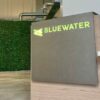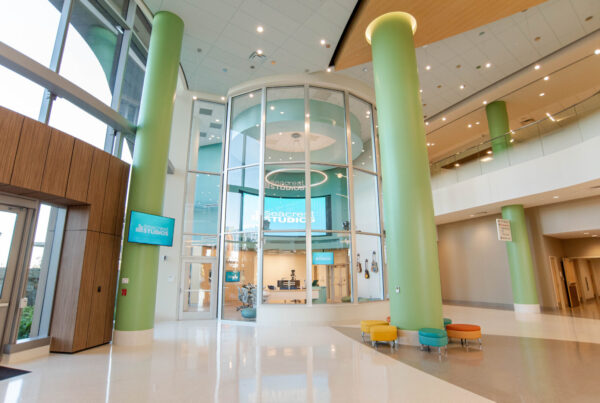For years, we’ve been talking about the impact that COVID-19 will have on the workplace. From introducing touchless technology to prevent the spread of germs to installing temperature scanners and occupancy sensors throughout the office to keep workers as safe as possible, it’s safe to say that the traditional office space that we’ve always known will be forever impacted.
But perhaps the most significant long-term change we will see in the post-pandemic modern workplace is the number of employees that will continue to work virtually in either a full-time or hybrid capacity. One way that businesses can still facilitate teamwork and make use of their real estate is through huddle rooms or spaces or multiple-purpose collaboration spaces.
The Future of the Modern Workplace
According to a survey by Harvard Business School, 81% of people working from home during the pandemic either don’t want to return to work or prefer a hybrid schedule. “Of the 1,500 remote workers surveyed for the study, 27% hope to continue working remotely full time indefinitely, while 61% would prefer to mix working from home with going into the office two or three days a week,” the study reported.
For businesses that allow employees the flexibility of a hybrid work model, this could mean that at any given time, you may have a mix of employees working in the office or from home, all depending on the day of the week, time of day, the number of meetings, or type of work an employee has on their plate for that particular day.
This also means that there will need to be an influx of technology to ensure productivity and collaboration between remote team members or clients and in-person employees. Team meetings may now require video conference capabilities for remote participants and quick phone calls with clients may now be video-based Zoom calls.
So how do you ensure all employees have access to the rooms, screen-sharing capabilities, and presentation tools needed to fuel this hybrid model? Enter the huddle space.

The Importance of Huddle Spaces
A huddle space is a one-size-fits-all room for small groups that functions as both a typical office space and a useable, wired meeting space. The theory behind these convertible rooms is that, instead of having a specific area in the workplace that can only be used for one or two things (such as a lunchroom, a lobby, a break room, or an atrium), the room design allows you to convert all these spaces to huddle rooms that can be used for virtual meetings with external remote support and capabilities that can be used at a moment’s notice.
Huddle rooms often still have traditional conference room technology like digital whiteboards and AV capabilities, but they allow for shorter or ad hoc meetings between small teams. This can help facilitate brainstorming and improve team collaboration.
Huddle spaces have many other benefits, which is why they have become so popular in modern workplaces. Some benefits include…
- They use dormant space: Huddle rooms make the most of wasted space. They offer your employees more meeting rooms, create a flexible working environment, and free up dormant rooms (like that huge board room you have but never use).
- They are multi-purpose: Huddle rooms typically have a wide variety of uses. Different teams and team members use traditional all-in-one huddle spaces throughout the week and aren’t conformed to one layout or design.
- They have high foot traffic: Your employees won’t have to wander around your building looking for a free meeting area. Instead, with a huddle space, they can go anywhere in your building – even the most unused areas (hello, lobby!) – and quickly connect. This gets employees online faster and allows for seamless real-time teamwork across your workspace.
And the excellent news for businesses is that potential huddle rooms are already everywhere within your office. Wainhouse Research estimated that there are already approximately 50 million huddle rooms globally but that well over 50% of them have little to no technology in place – and certainly not the type of huddle space technology one would need to connect to a largely remote workforce.

Ideal Huddle Room Design
Similar to how you would design a large conference room, we recommend creating huddle spaces that can accommodate face-to-face groups but make it possible to collaborate with global teams via touchless solutions and technologies that can support a variety of meeting platforms and video conferencing solutions such as Zoom and Teams. Your huddle rooms should have all the collaboration tools your in-person employees need to meet with remote workers, such as wireless presentation screens, video conferencing cameras, and touchless room controls. Huddle rooms should allow employees to bring their own devices (BYOD).
We also recommend designing the room with easy-to-clean surfaces and microbial seating when possible to promote health and wellness.
Additionally, digital signage both inside and outside of the space should be ideally interactive and even touch-less. It should clearly show room capacity, availability, and a calendar for the future accessibility of the space. The cleaning schedule of the space should also be readily available for a huddle room for those employees that wish to book a recently cleaned room.
Tips to Use Your Huddle Room Efficiently
Not only is the technology, functionality, and room size important for your next huddle room build-out, but how you book meetings and conduct them is vital too. Booking meetings in advance can help employees better plan their schedules. Leaving time between the meeting before or following yours can allow time to clean the space for the following attendees, such as wiping down tables or cleaning the room control system. Finally, be mindful of any huddle room capacity limits and schedule some participants remotely if needed.
In a pre-pandemic world, small meeting rooms and huddle spaces were often places where employees could sneak away and capture uninterrupted work time without people walking by a desk or popping into an office. We anticipate this will no longer be the case, and huddle rooms will be reserved for small group meetings. We recommend booking enough space for the essential in-person attendees and having everyone else call in so that from time to room, you might still be able to use a huddle room as a singular employee or group of two.
Keep your meetings brief. Your agenda should be concise and covered quickly. You can even book a portion of the meeting in-person where possible, such as a brainstorming session. The session’s findings could be shared remotely or with a small physical team and a larger remote audience.

Bluewater’s Huddle Space Offerings
The days of large in-person, in-office gatherings may be limited, but employees will be taking advantage of team huddle spaces for years to come. Here at Bluewater, we want to make sure you are prepared to do that. We offer several top-of-the-line, no-risk plans that will get your office “people-ready” again.
For example, we partner with Crestron to offer their Voice-Activated Huddle Rooms that have all the advantages of a convertible huddle space, plus the benefits of voice-activated access, including remotely reserving rooms in advance, outside-the-room availability indicators, and the ability to monitor/manage room equipment remotely.
We also offer top visual collaboration technology like T1V’s ThinkHub collaboration solution, which unites in-room and remote workers while supporting spontaneous collaboration. ThinkHub helps teams work better together, whether your teams are in the same room, spread across different global sites, or connecting from home.
Whatever you decide to do regarding your huddle spaces of the future, make sure you listen to your employee’s desires and needs. If a clean environment is the most crucial piece of the experience for your employees, then focus on that. If a large portion of your workforce stays remote, then huddle space connectivity and technology that supports that should be your most important priority. The employee needs of each organization will primarily drive the look and feel of the huddle space of the future. Bluewater will work with you to help you find the best solution for your workforce.
To learn more about our return-to-work offerings and best practices, contact our team at Bluewater today. We would be happy to answer any questions you might have.











